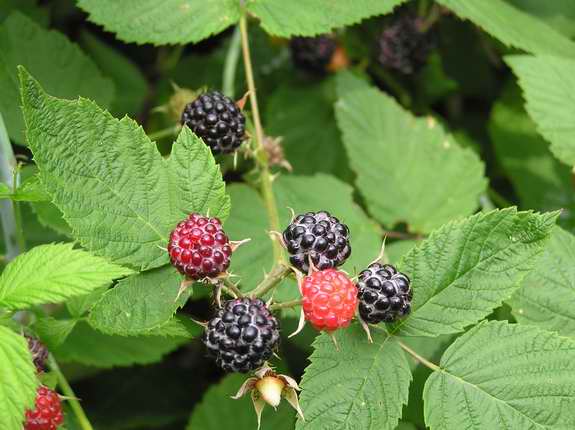|
Common Name: Black Raspberry (Rasp is either Old High German hrespan meaning scrape together referring to the thorniness, or Middle English raspis, a kind of wine) Scientific Name: Rubus occidentalis (The genus Rubus is Latin for bramble-bush, occidentalis is from the Latin occidens, meaning of the evening or to the west) A low shrub with a prickly stem that propagates in disturbed areas at the margins of woodlands, ravines, fields and trails, the black raspberry is easily recognized by its fruit. Potpourri: The black raspberry is not a berry but an aggregate of tiny drupes. A berry is defined as a fleshy fruit with a soft wall and thin skin, such as a tomato. A drupe has a soft, fleshy interior covered by an outer skin all surrounding a central stone. The characteristic graininess of the raspberry is due to the stones of the multiple drupes. The generic word bramble for a thorny shrub or vine was originally exclusively applied to plants of the Genus Rubus, which means bramble-bush in Latin. The raspberry probably evolved in eastern Asia and has been a staple of the human diet for millennia. Pliny the Elder, the noted Roman naturalist and writer (23-79 CE), noted the raspberry as a wild fruit. They have been cultivated in England since the early 17th century. There are many species of raspberry-like bramble-bush fruits that have similar characteristics. The red raspberry (R. idaeus) grows wild in the Northern and Western states. The thimbleberry (R. parviflorus) is strictly a Western variant. The wineberry (R. phoenicolasius) is common in the Mid-Atlantic and Northern states. It is characterized by shiny bright red fruits that are more tart than red or black raspberries. |
